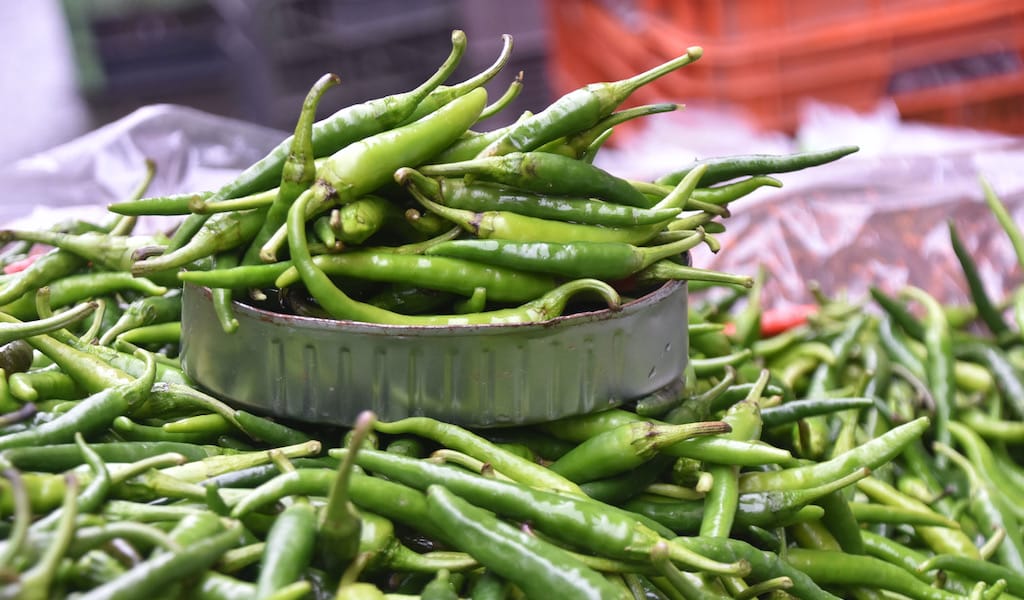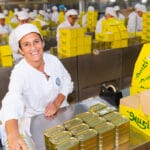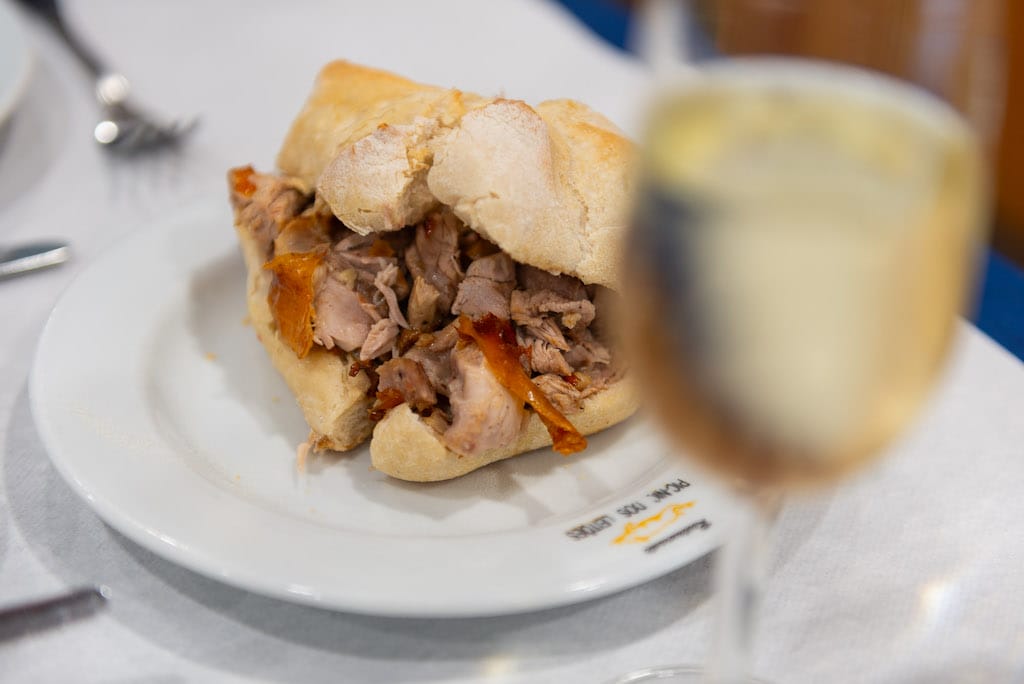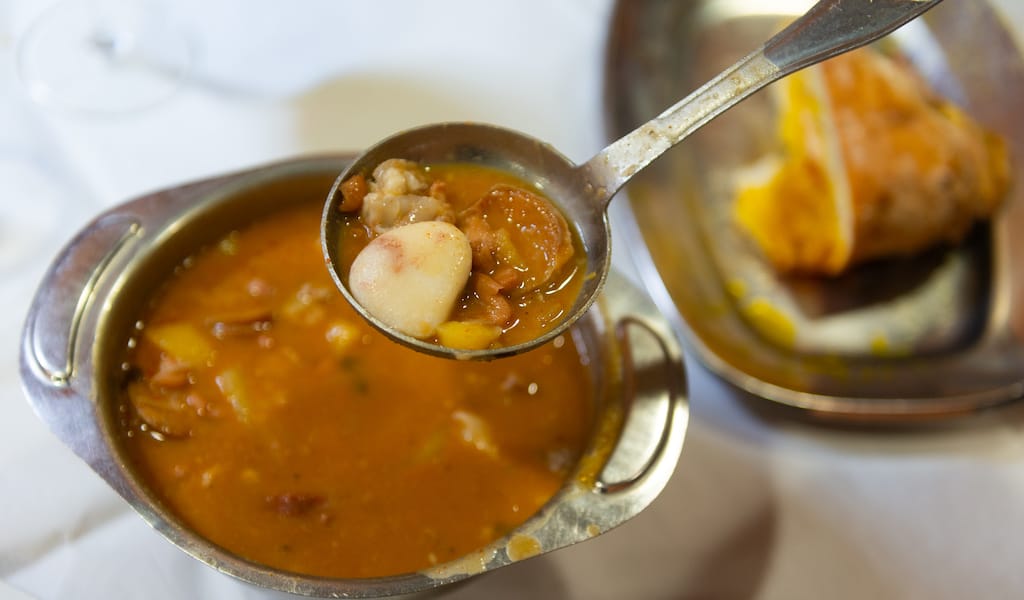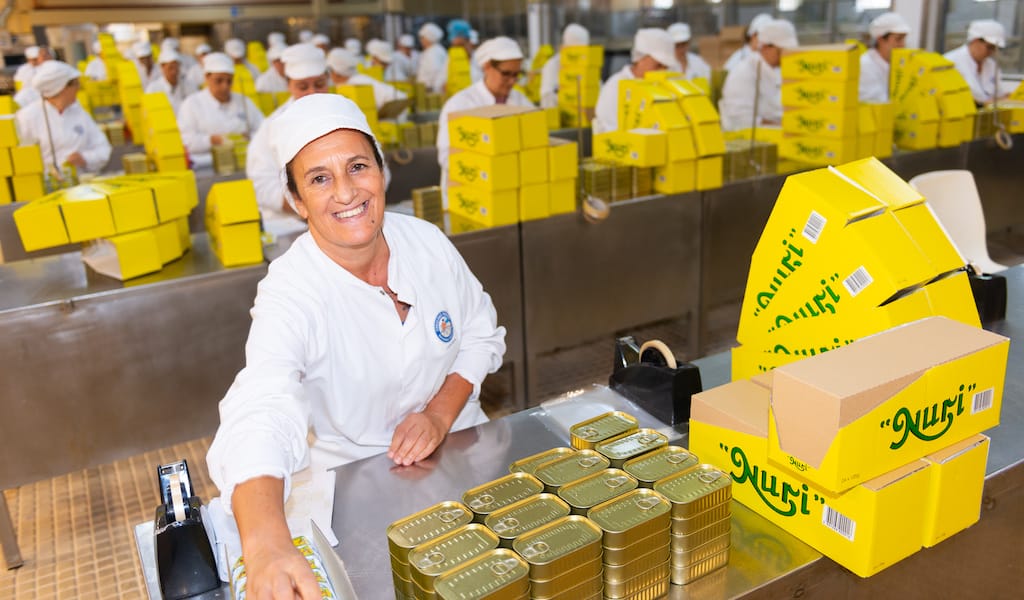San Gregorio, located in the southernmost part of Mexico City, is a pueblo originario (“original pueblo”), a designation given by the government to towns that have held onto their traditions. One of those traditions in San Gregorio is growing produce in the chinampería, an ancient agricultural system comprised of man-made islands crisscrossed by canals. People who farm there are called chinamperos.
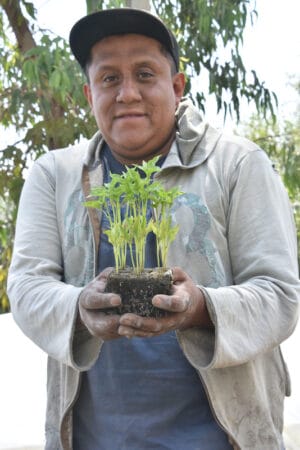 One of the prized crops in this area is the small, spicy chile chicuarote, which has been grown exclusively in the pueblo for centuries. People living in San Gregorio Atlapulco are so enamored with the tiny chile that they proudly call themselves Chicuarotes. “People here are strong or intense, like the chile,” said Ernesto Garcia Zeferino, one of a couple of hundred chinamperos still farming that land and one of the few who still grow chile chicuarote. But as proud as the locals are of their signature crop, the chile is at risk of disappearing.
One of the prized crops in this area is the small, spicy chile chicuarote, which has been grown exclusively in the pueblo for centuries. People living in San Gregorio Atlapulco are so enamored with the tiny chile that they proudly call themselves Chicuarotes. “People here are strong or intense, like the chile,” said Ernesto Garcia Zeferino, one of a couple of hundred chinamperos still farming that land and one of the few who still grow chile chicuarote. But as proud as the locals are of their signature crop, the chile is at risk of disappearing.
Years ago, virtually all of San Gregorio’s chinamperos grew the chile. But now, said Zeferino, “About ten chinamperos are planting the chile. My abuelo said it was their daily food…a basic food.” Now, as Juan Serralde, another chinampero, explained, “There are other chiles available – chile poblano, chile de arbol, jalapeños – that are found everywhere in Mexico. Chile chicuarote is not as popular because it is not considered modern.” The chicuarote isn’t even one of the 64 types of domesticated chiles officially listed by Mexico’s Secretariat of Agriculture, Livestock, Rural Development, Fisheries and Food.
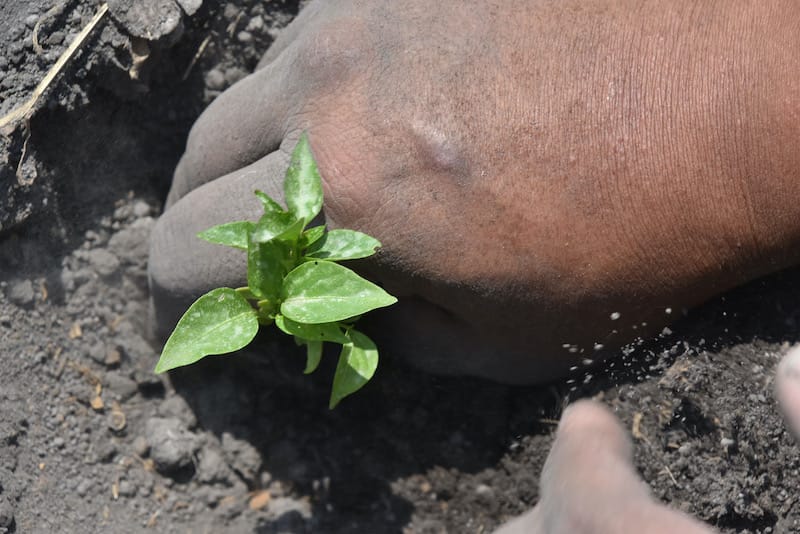
Another reason so few chinamperos plant the chile today is the time it takes to grow the crop.
Zeferino put chile seeds in small, dried mud squares called chapines in March. By May, the plants were ready to be planted in his chinampa and finally, in early August, the chiles were ready to be harvested. “It is five months total,” he said. “Something like lettuce can be harvested in two months and one can have four or five harvests a year. With chile chicuarote, there is only one harvest.”
In May, Zeferino knelt on the ground, blessing it and himself. “I do this to ask God that things go well,” he said. He placed three or four chile plants in the hole he made with his hand. “It is necessary to have more than one plant in each hole. This will yield more chiles per plant.” He used the width of his hand to measure the distance to the next hole – about ten inches – and continued planting.
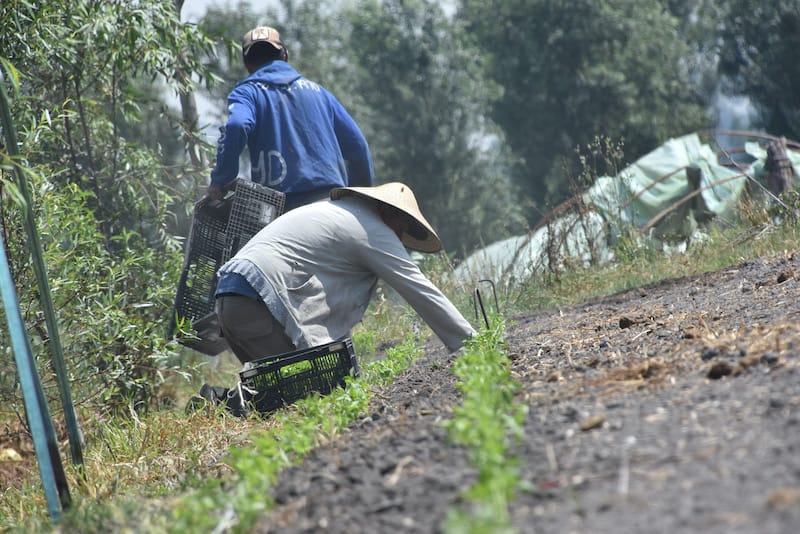
By the first week in August, the chiles were ready to be harvested (the harvest in Mexico is called la corta). There are several ways to know if the chiles ready. “Number one, the time of year,” Zeferino explained. “Two, the plants have fruit. Three, the color: the chiles start out light green and turn dark green when they are ready to harvest. And the size, which is between five and eight centimeters [in length].”
This year, Diana López del Rio, the owner of Mux Restaurante in Mexico City’s Roma Norte neighborhood, joined Zeferino for the first harvest.
Del Rio’s restaurant features Mexican dishes from what she calls the cocina tradicional. She rotates her menus, each one featuring cuisine from a particular state or pueblo. She travels extensively, returning with recipes and knowledge from traditional cooks. She’s been buying produce grown in the chinampería at the main vegetable center in Mexico City for years and first visited the chinampería in 2013. But until recently, she didn’t know about chile chicuarote. Once she did, she knew she wanted to feature it in her restaurant. She wants to save it, she said, because, “We want to save a culture, an identity. Also, to save the chinampería.”
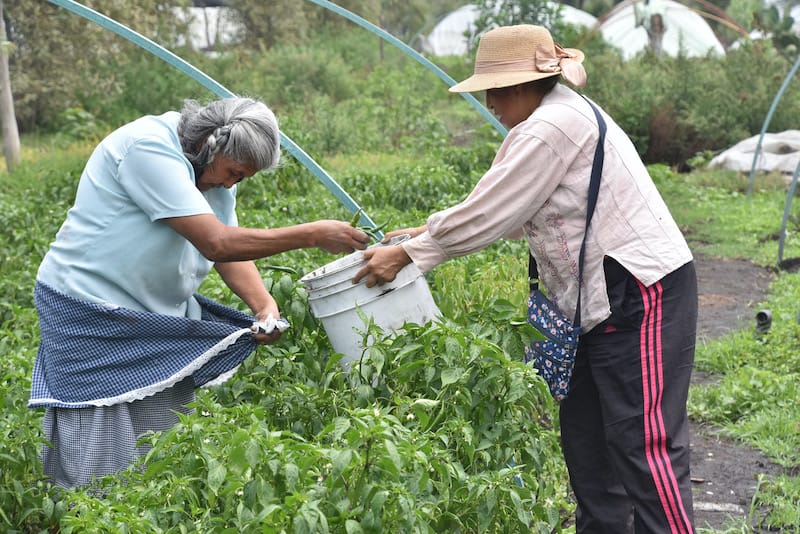
Zeferino gave del Rio a quick lesson on how to know which chiles were ready to pick and then the two of them, joined later by Dionisia Zeferino Francisco, Zeferino’s mother, and Micaela Ramos González, his 80-year-old grandmother, began la corta.
They filled two large buckets with chiles on the first day, which González would sell at San Gregorio’s market. The chiles aren’t sold by weight. Instead, a large sardine tin is used, something that’s more traditional. “Each tin holds about one-quarter of a kilo,” said Zeferino, “and sells for 20 to 25 pesos ($1.20 to $1.50 USD).” Del Rio bought eight tins worth, with González tossing a bunch of extra chiles into her bag.
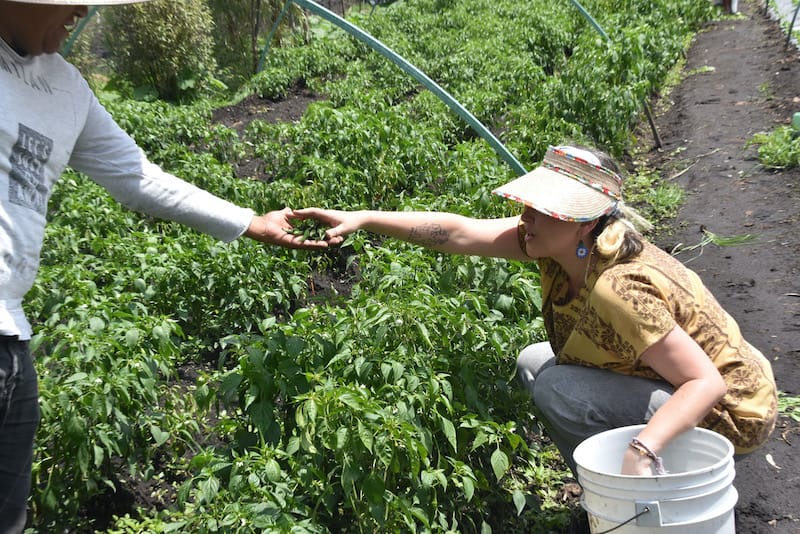
Most people in San Gregorio only use the chile in salsas but González gave del Rio a recipe for carne de puerco, a dish made with pork. “It has verdolaga [purslane], potatoes, white radish and the fresh chile chicuarote,” del Rio shared as she tossed ingredients in a large cazuela, an earthenware pot. She’ll also make a jam from the fresh chiles and will ferment some, using the resulting liquid and chiles in dressings.
Right now, she’s experimenting with the chile. “The flavor is very green, fresh,” she said. “More like a green pepper but spicy. It’s more like a jalapeño in terms of spiciness but nothing like a habañero. The flavor is quite different.” There are challenges to working with something brand new. “The chiles differ depending on how much sun they get. The ones on top of the plant are spicier. The ones lower, in the shade, are less spicy. The light green ones, are not so spicy but the darker green are spicy. And as they mature, are spicier.”
She’s now offering the carne de puerco, as well as a chicken stew, the jelly and dressings, all made with chile chicuarote, in her restaurant.
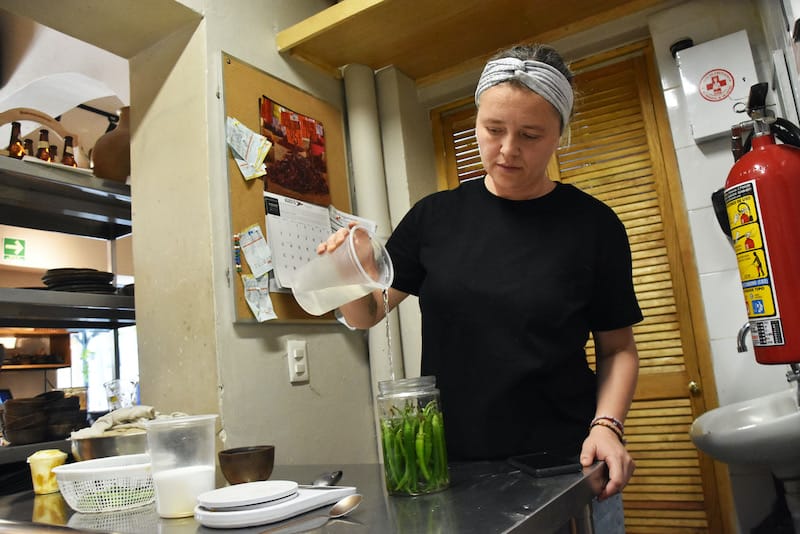
Another strike against the chicuarote is that the chile is challenging to grow. Zeferino loses 10 percent of his crop to a worm that bores into the chile, turning the inside black. Those can’t be sold. Another 10 percent of his plants are lost to tuzas, gopher-like animals that eat the roots. Sometimes, people even steal the plants or the chiles. Even when there’s a good harvest, “There is really no market for it,” said Zeferino. “It is a local product. Chinamperos plant lettuce and other things because they can sell [them] anywhere.” But Zeferino plans to continue. “I am the fifth generation to grow the chile. I plant it to conserve this chile. It is part of our tradition, a [tribute to] my ancestors. I am proud to conserve something native from here and contribute to my pueblo.”

When asked if the chile would stand a better chance of surviving if seeds were given to other pueblos, Zeferino wasn’t sure. “Maybe, but they will not value it as people here in San Gregorio do,” he said. “I believe it is better not to give anyone else the seeds. There is a sentimental value to it here. The chile is more important than just economics. Others do not know the history, the story of the chile, its value. They do not have the feeling for it that we in San Gregorio have.”
Sadly, it’s not just chile chicuarote that’s at risk of disappearing.
There’s evidence that the chinampas were first built 5,000 years ago and those in San Gregorio are between 1,500 and 2,000 years old. Every year, there’s less water in the canals—more and more goes to supply Mexico City’s needs – and many have dried up. There’s more contamination, more encroachment by what’s referred to as la mancha urbana – the urban stain – and less land for planting. “If people continue to mistreat the chinampería,” said del Rio, “I do not think it will last twenty years.”
To contact Ernesto about buying chile chicuarote, you can reach him on Instagram, or by telephone at 011-52-55-1361-3354.
Joseph SorrentinoJoseph Sorrentino
Published on August 31, 2023
Related stories
February 7, 2024
PortoAt first glance, there’s not much to see in Mealhada, a town in Portugal’s central inland Bairrada region about an hour’s drive south of Porto. If there is a main feature here, it’s probably the EN1, the country’s original north-south highway, which slices the town in half, providing a conduit for a seemingly never-ending parade…
January 19, 2024
LisbonIt’s an early example of guilt tripping. The story goes that a monk arrived in a Portuguese village, hungry and clever. He grabbed a rock and carried it door to door, claiming that it was his only ingredient, asking people if they would be kind enough to supplement it so he could make a meal.…
December 7, 2023
PortoMatosinhos, it could be said, has seen better times. In its heyday, the semi-industrial-feeling port city just north of Porto was once home to 54 fish canneries. Today, only two remain. Along the city’s wide, empty-feeling streets, some of the city’s former factories and their graceful Art Nouveau facades have been reappropriated as other businesses…







































